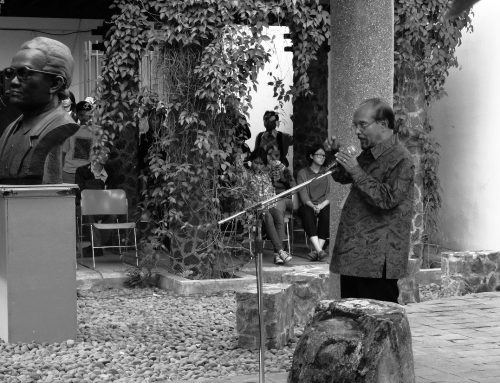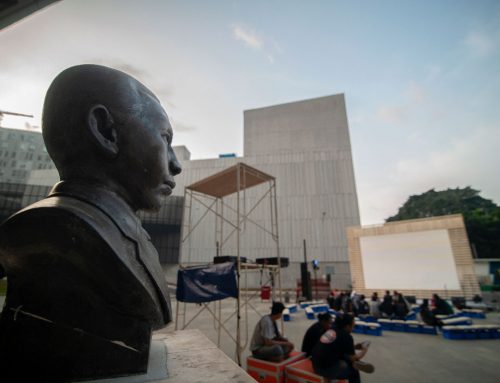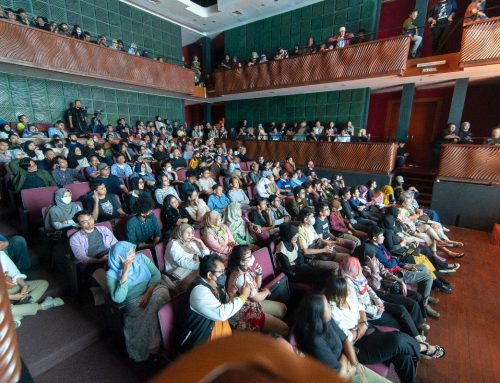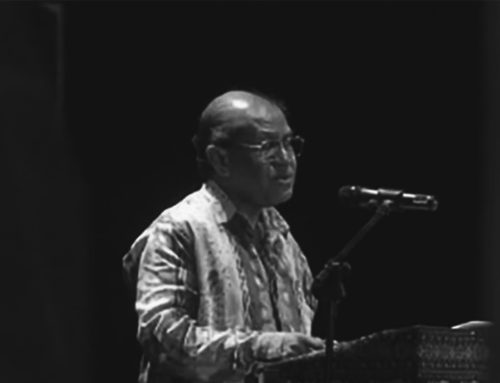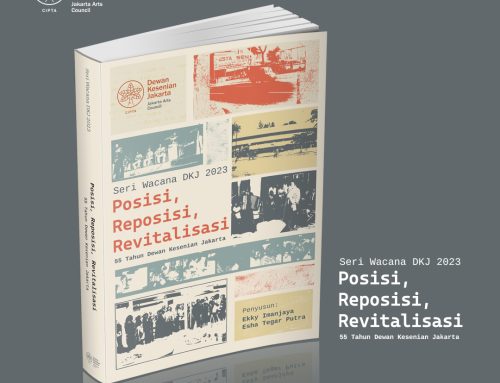Lynn Lee, Indonesia Correspondent
February 15, 2009 Sunday, 07:47 PM
————————————
Lynn Lee walks us through the inspiring works of the Jakarta Biennale.
VISITORS to Jakarta’s National Gallery this month will first be wowed by the building’s well-preserved colonial architecture, and then by what’s on show inside its cavernous halls.
Huge canvas paintings by Australian artist David Griggs, mostly inspired by violence and gore on the streets of Manila, hang near the entrance. Down in the basement, Singapore-based Sherman Ong captures objects and moments in Hanoi – an altar in someone’s home, a couple having tea by the roadside. A few metres away, young Javanese artist Jompet employs ear-deafening audio, video and bodiless soldiers to demonstrate the theme of war that runs through Java’s past.
These works are part of this year’s Jakarta Biennale, a bid by the city’s Arts Council to showcase foreign artists, and help the city take a step towards becoming an international arts hub.
Around 40 of them have their work on show at the Gallery and at the Grand Indonesia mall, including three Singaporeans Donna Ong, Khairuddin Hori and Ming Wong, who were in town for the Biennale’s opening on Feb 7.
I visited both exhibition sites over the weekend and was thoroughly impressed by the varied, yet carefully-considered nature of the works.
Artist Ming Wong, in a four channel-vide installation, explores identity and language by re-enacting scenes from four of Malaysian director P Ramlee’s best-known films from the 1950s to 1970s. He plays 16 different characters, donning wigs and fake mustaches where necessary – from a negligee-clad vixen who is shot dead, to a makcik begging for forgiveness from God, to a young man who pokes his eyes out with a fork – reciting their lines in his non-fluent Malay. The scenes are repeated over and over, with English subtitles.
For artist Khairuddin Hori, his bid to bring art back to the people has led him to create the Jakarta Biennale Community College, an extension of an earlier work. Thus, in a corner of the Gallery are rows of chairs facing a whiteboard, depicting a classroom. At various times during the past week, people were urged to contribute to the “curriculum” by leading discussions or sharing their expertise on a particular topic.
A 10-minute cab ride away to a mall with plush carpets and gleaming luxury stores, is Ms Ong’s black and white video installation titled “The Meeting”. The series of frames shows dolls from the United States and Japan in changing light settings and positions, and is a historical documentation of a series of doll exchanges between the United States and Japan that went sour because of World War II.
From 1927, more than 10,000 blue-eyed dolls were sent to Japan, with a variety of kimono-clad dolls sent back to the United States. But when the war began, Japanese dolls were put in storage and the American ones were defaced or destroyed.
The exhibits, which are on show till Feb 27, are part of the second segment of the Biennale, which includes bringing art to the masses at places like parks, bus stops and walkways. The first segment, which began last November, included a film and literary festival, and outreach programmes like a comic-making workshop for inmates of a juvenile prison.
Of his first Biennale experience, Mr Khairuddin says he was inspired by how the program brought art into the public space, rather than just “being seen as elitist”.
It was a viewpoint shared by the Biennale’s program director Ade Darmawan, who had earlier said that Jakarta’s chaotic urban landscape had turned into an “arena…where there is a tight battle for space.”
“It becomes interesting when all these processes are no longer only about how to place an artwork in a room or an art gallery so the public will see it, but becomes a direct experience with the public, the location and the entire system surrounding it,” he said.
(The Straits Times Blogs)


